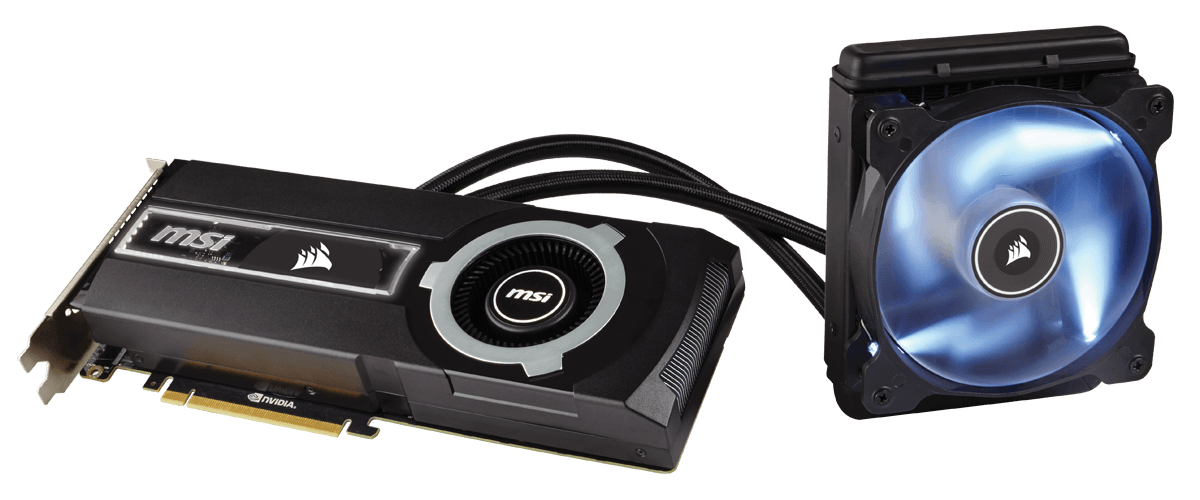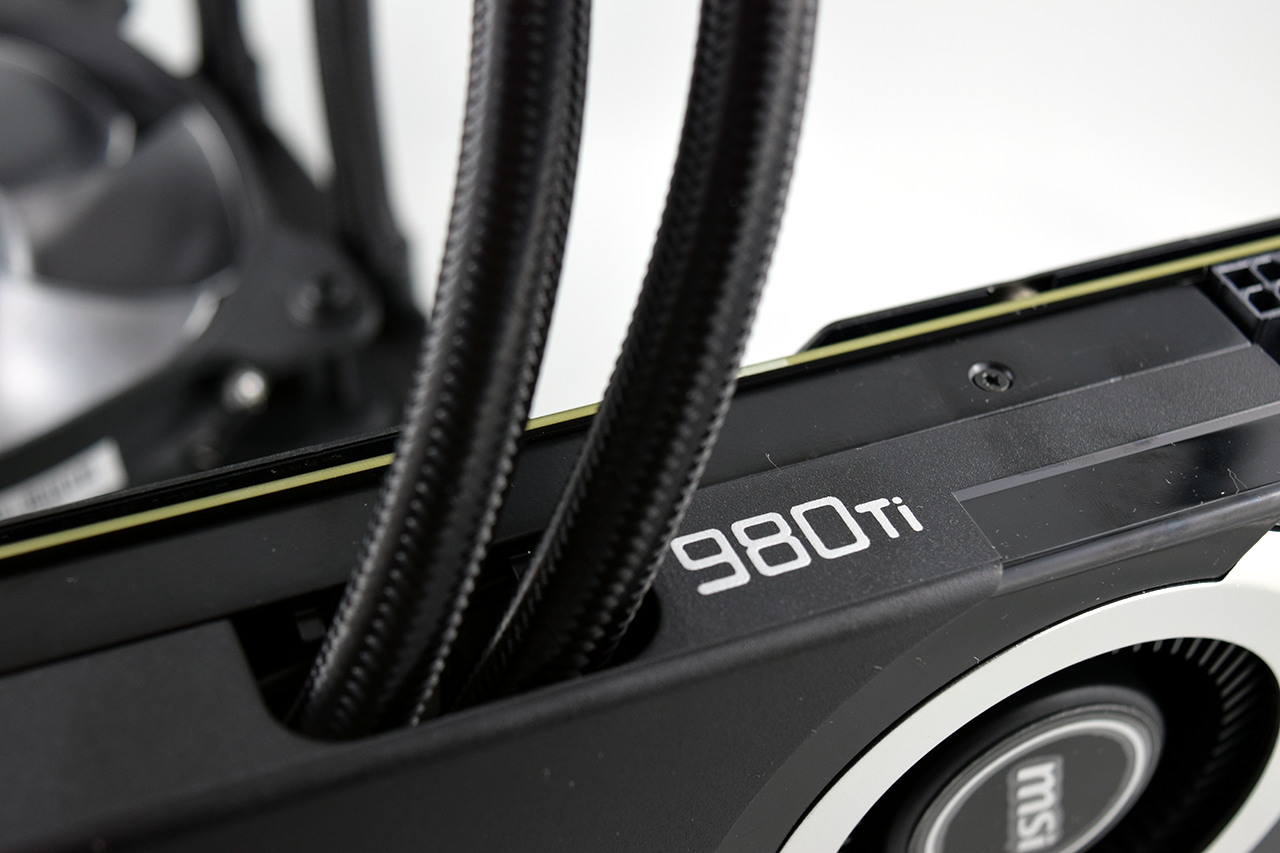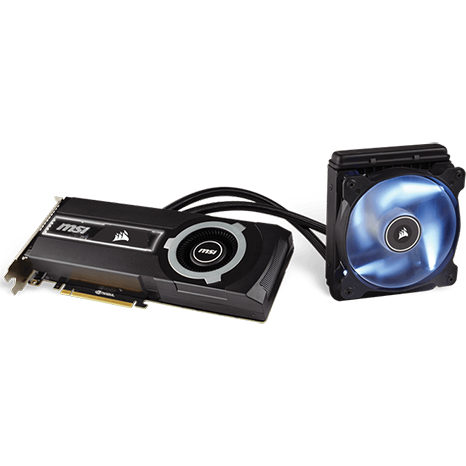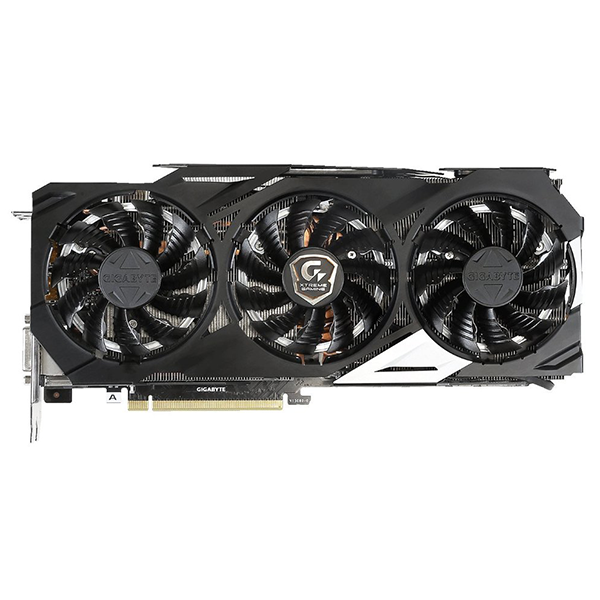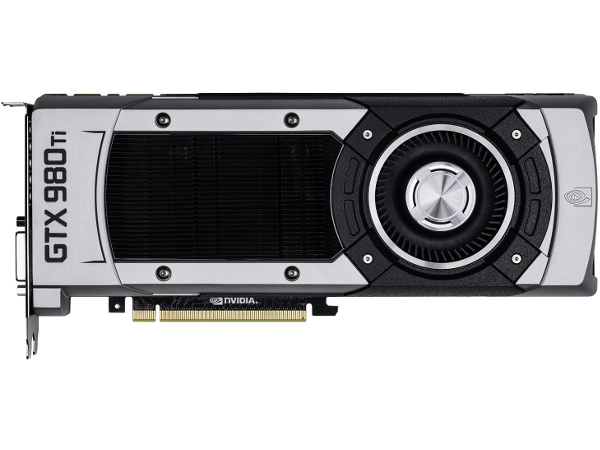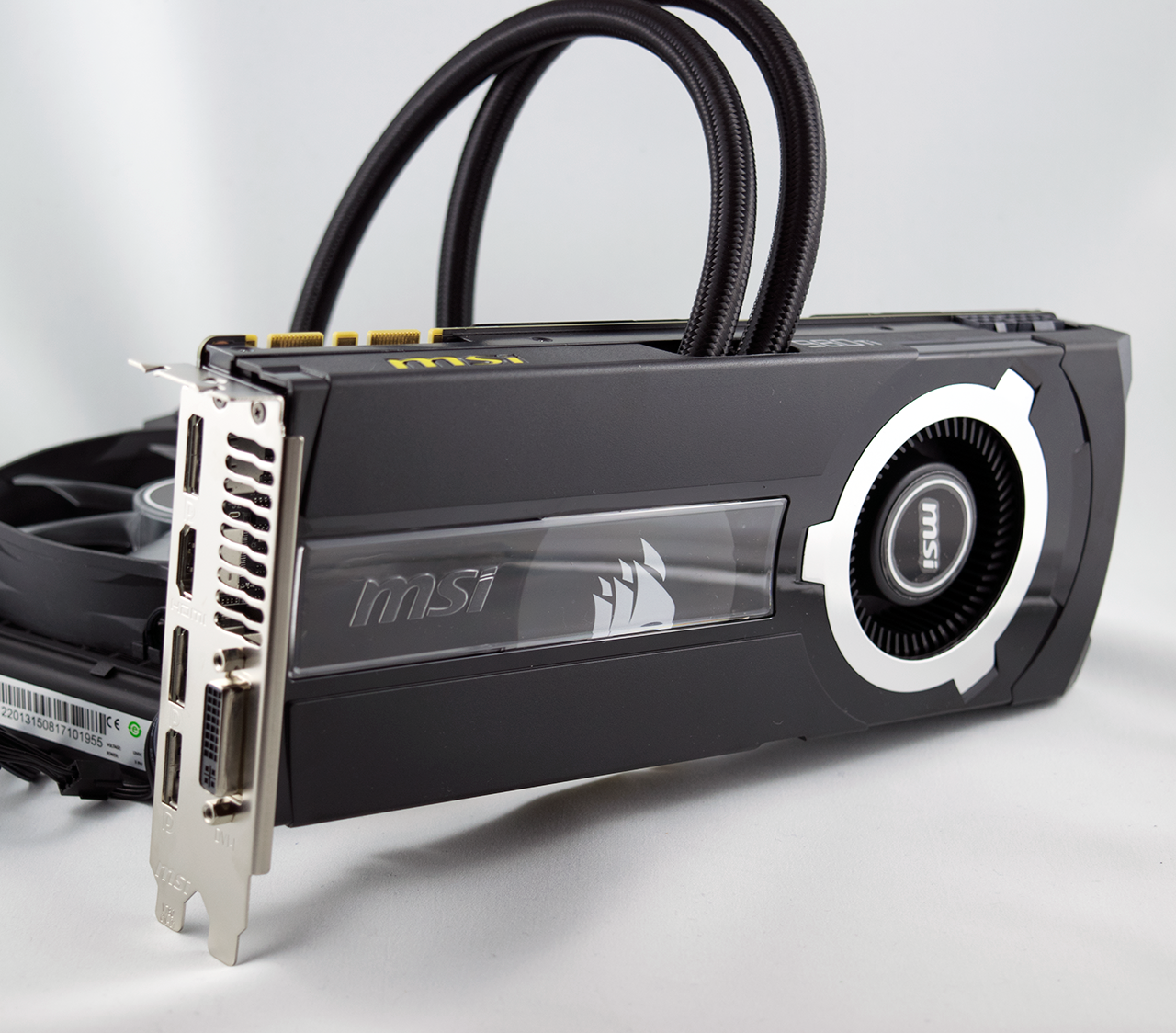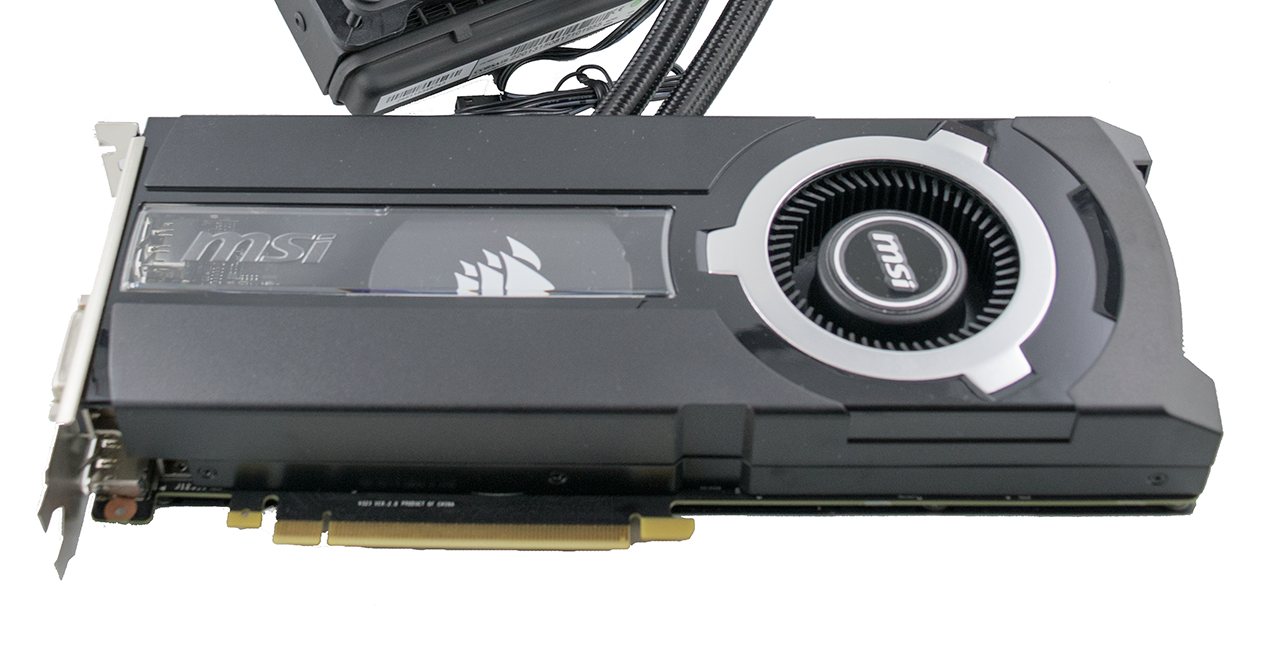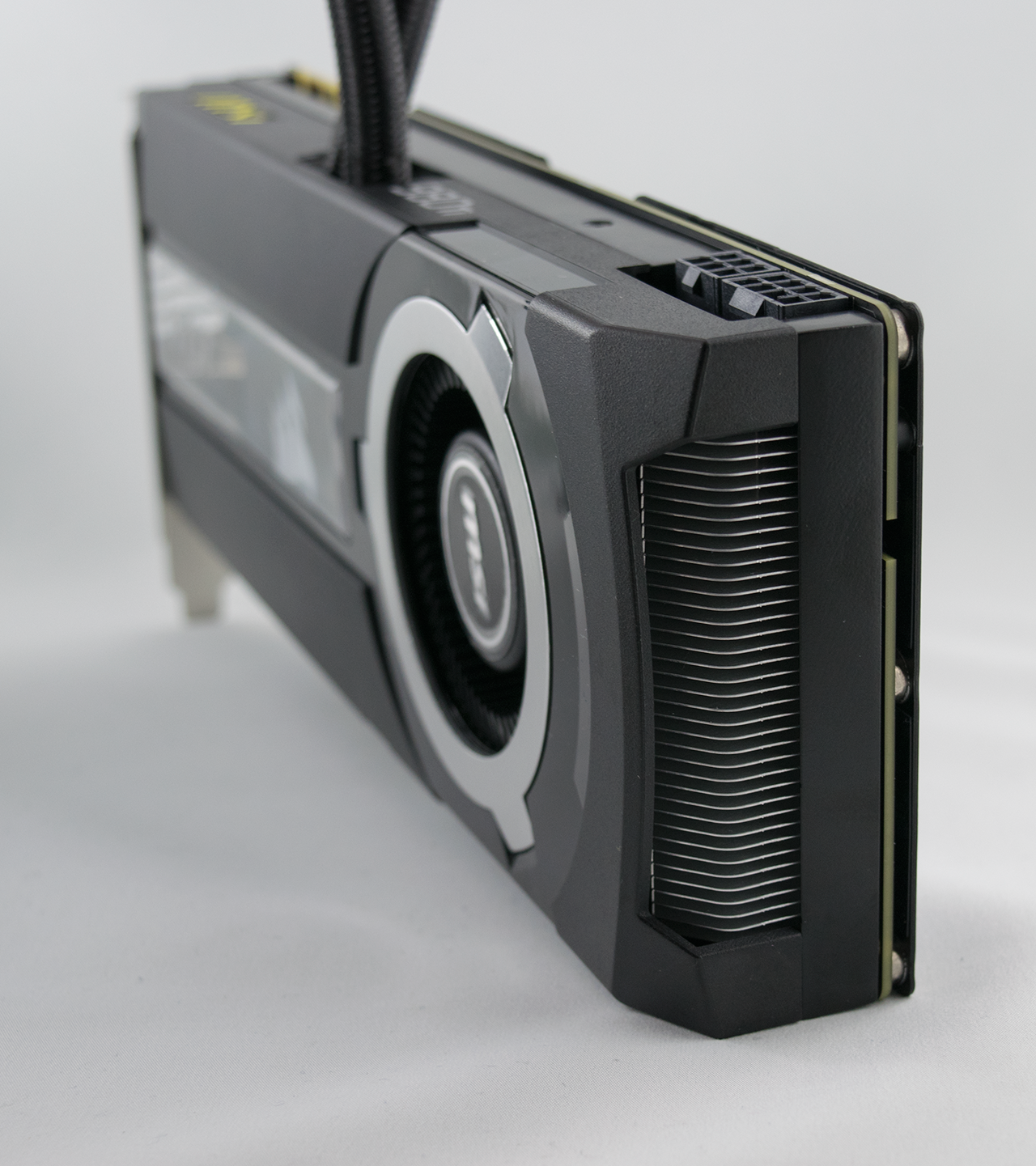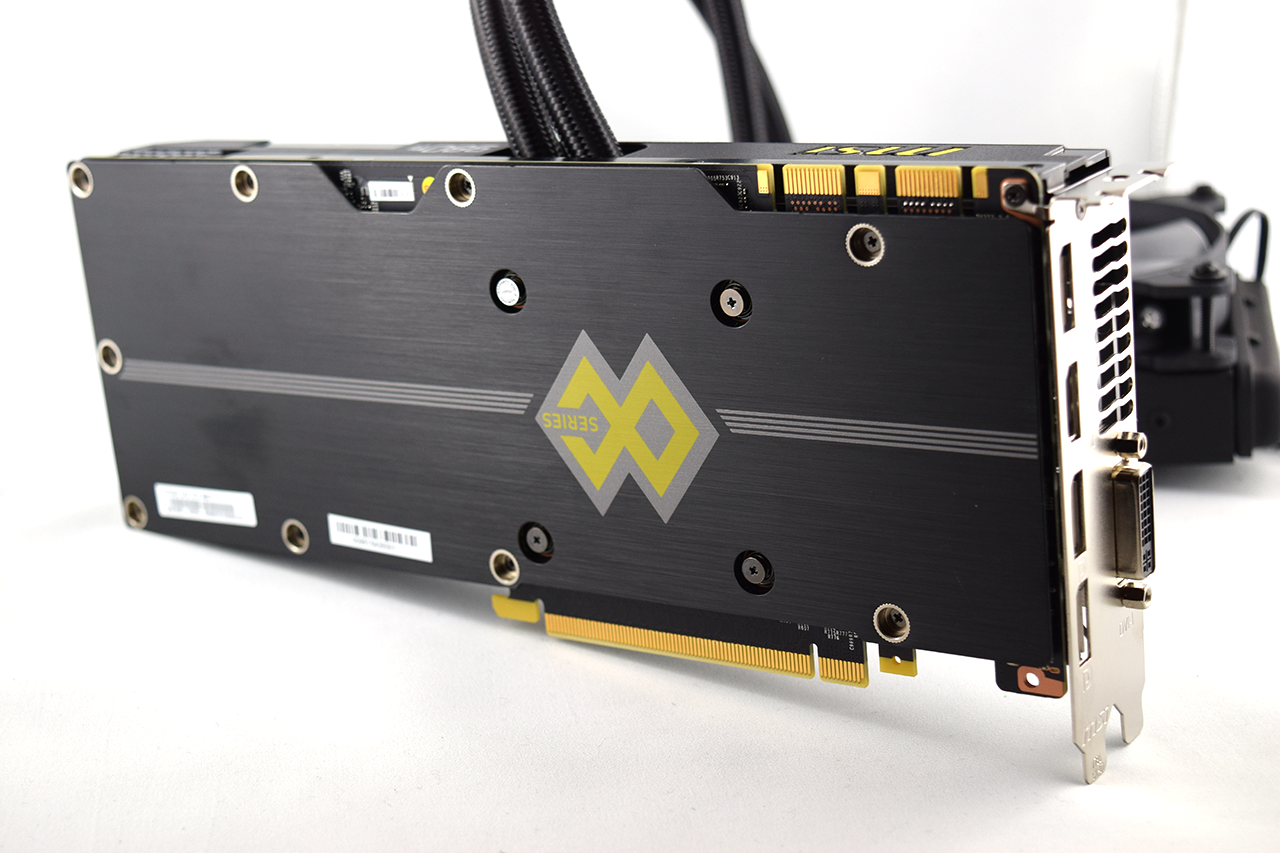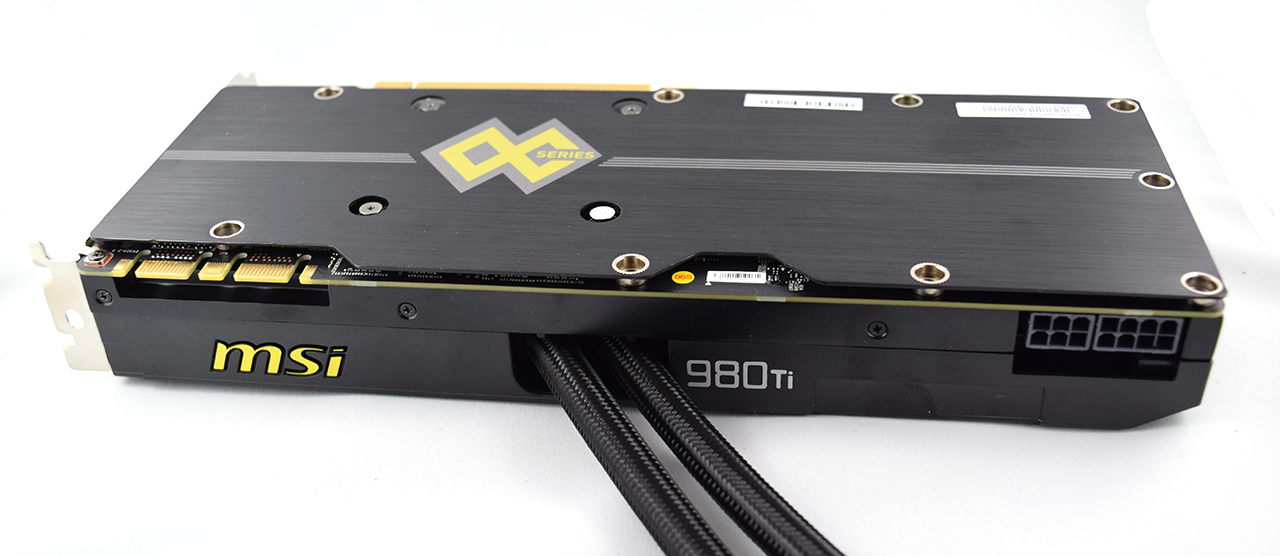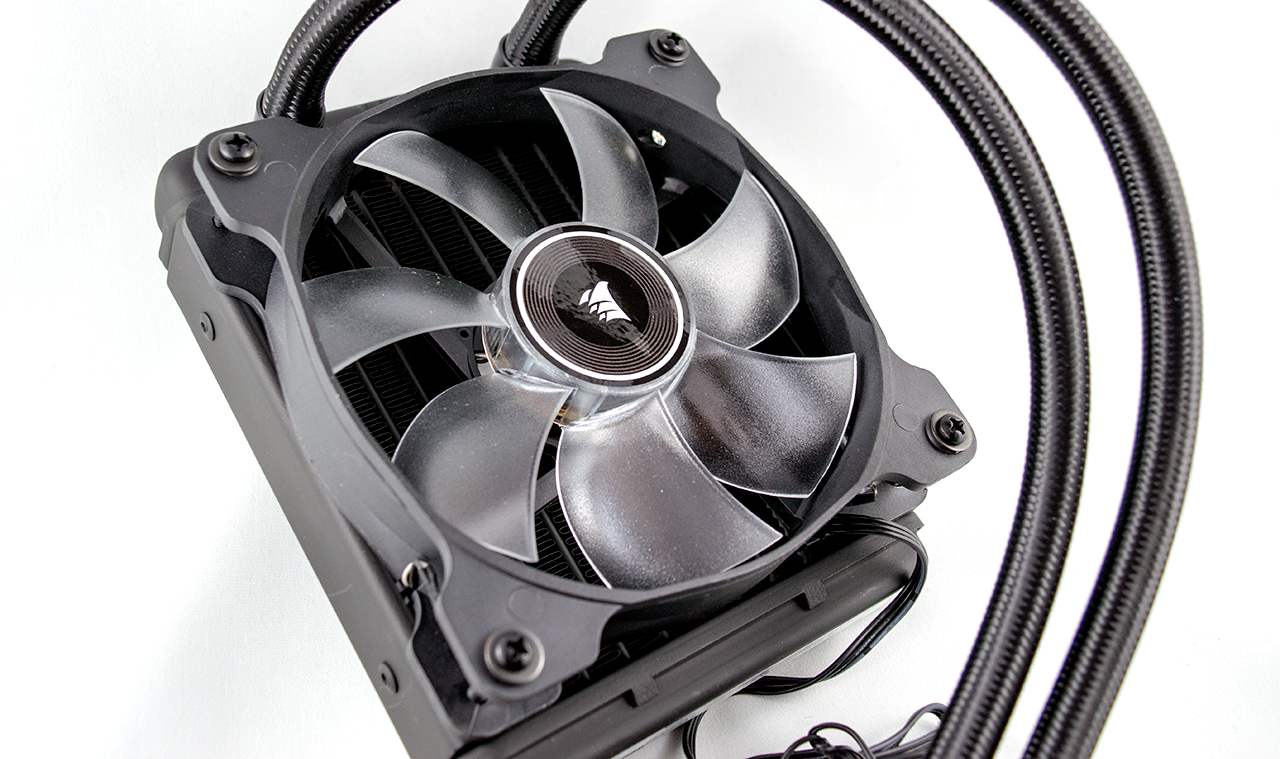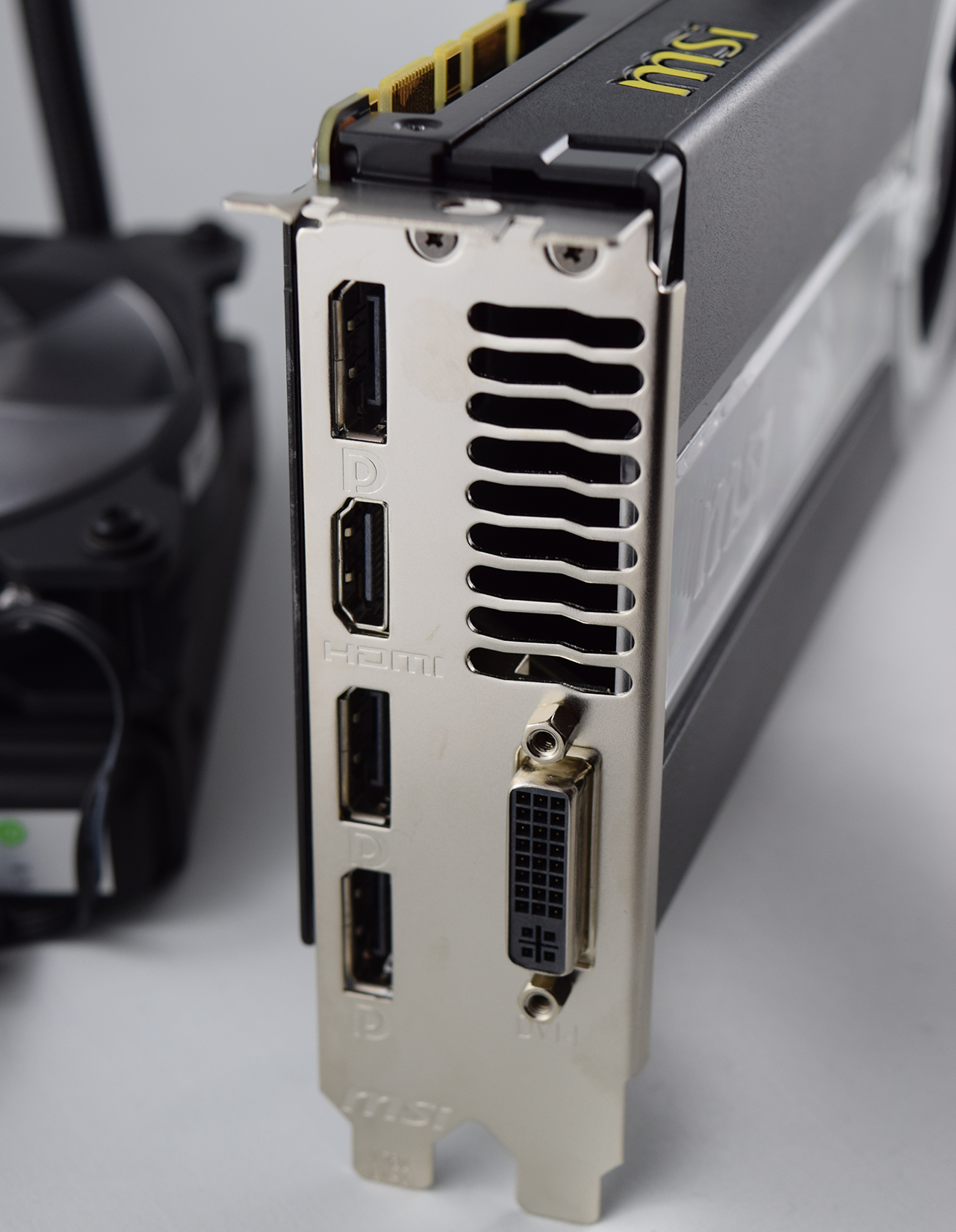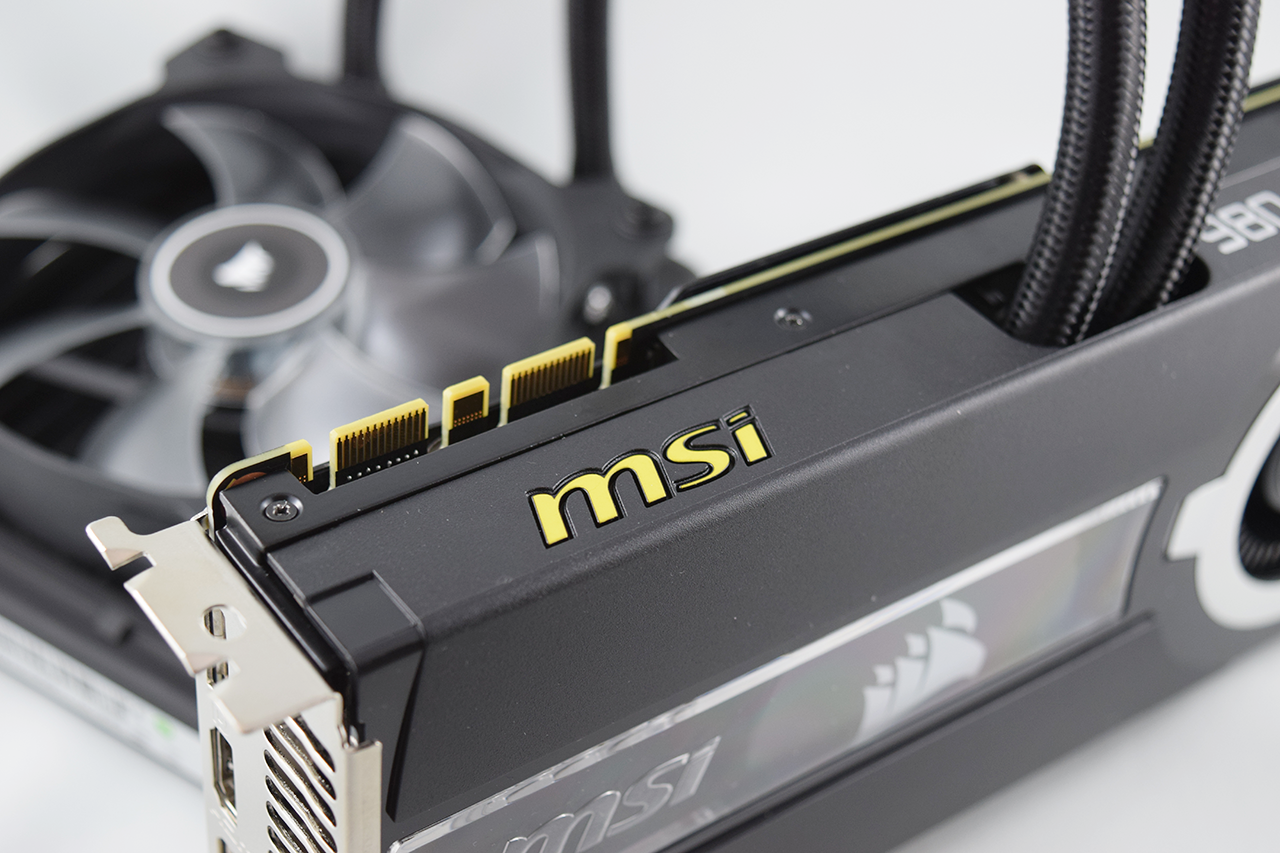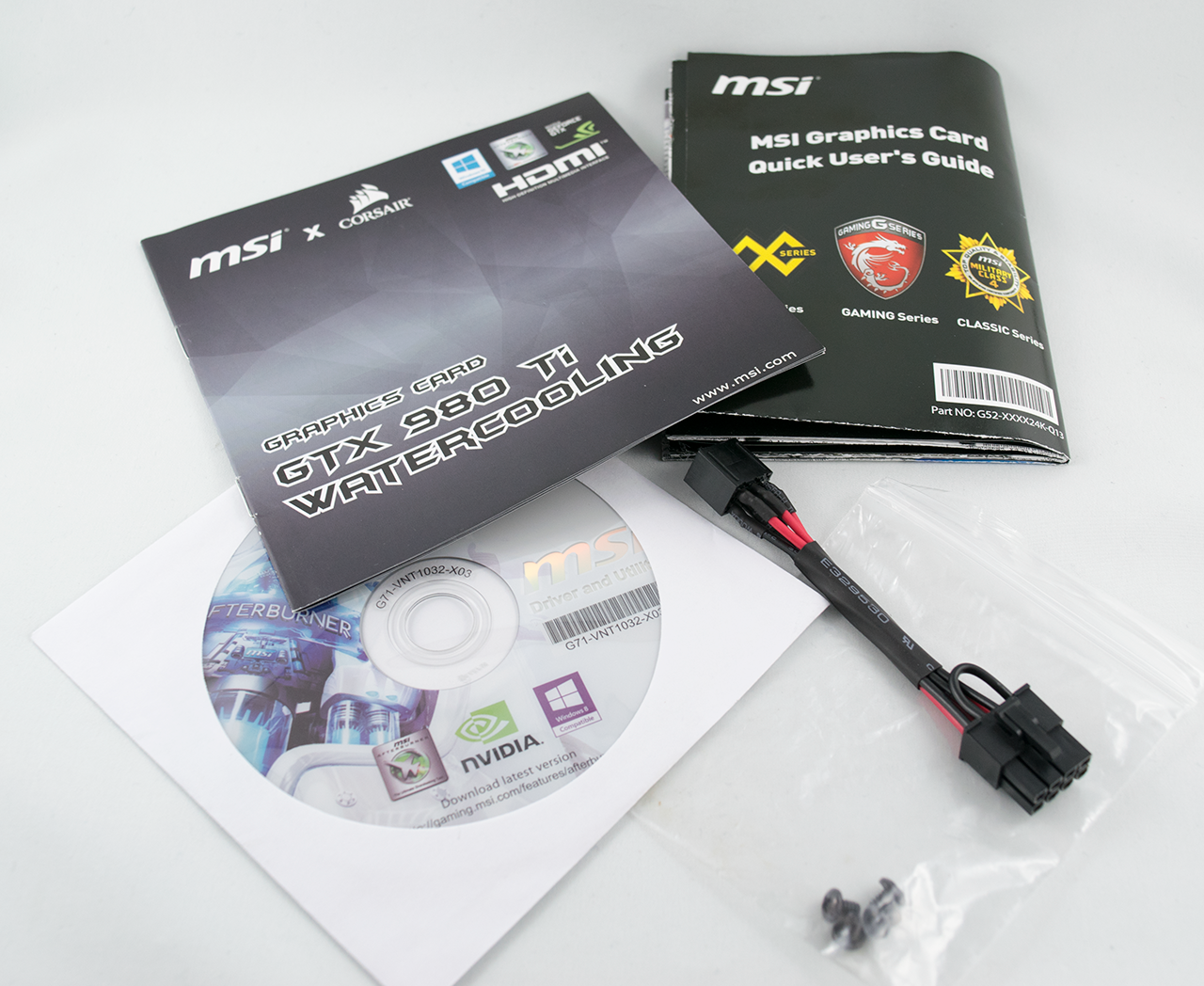Early Verdict
Corsair's Hydro GFX GTX 980 Ti performs very well in its factory configuration, but its real prowess is in its overclocking ability. The hybrid cooling solution keeps the GPU cool and lets the Boost Clock ramp up much further than most air-cooled solutions.
Pros
- +
Quiet at load • Very high boost clock • Low GPU temperatures • Capable of 4K gaming
Cons
- -
Never completely silent • Bland looks
Why you can trust Tom's Hardware
Introduction And Product 360
Corsair is obviously a well-known company in the PC hardware space. The company started off making memory, but has expanded its portfolio to include cases, power supplies, closed-loop water coolers and peripherals. Most recently, Corsair added a graphics card to its line-up: the Hydro GFX, a liquid-cooled GeForce GTX 980 Ti born of a partnership with MSI.
Rather than simply providing its cooler to MSI (similar to what Cooler Master did with AMD's Radeon R9 Fury X), Corsair is branding the Hydro GFX under its own name. But for all intents and purposes, the card is identical to MSI's GeForce GTX 980 Ti Sea Hawk, right down to the MSI logos plastered all over it.
Nvidia's reference GeForce GTX 980 Ti is rated for a 1000MHz core clock rate. The Corsair Hydro GFX, with its hybrid air/liquid-cooler, ships at 1190MHz. Moreover, Corsair tells us that there should be plenty of room to overclock, too. Like other 980 Tis, the Hydro GFX includes 6GB of GDDR5. Corsair's implementation is tweaked slightly. Whereas the reference memory subsystem has a 7 GT/s data rate, this card is rated at 7.1 GT/s. Again, we're assured that there's plenty of room to go higher (8 GT/s was thrown around as a conceivable goal).
Specifications
MORE: Best Graphics Cards For The MoneyMORE: All Graphics Content
MORE: Graphics Cards in the Forum
Product 360
The Corsair Hydro GFX features a hybrid cooler that combines a standard blower-style fan with Corsair's H55 120mm closed-loop solution. While we're expecting impressive thermal performance, the result of this marriage is aesthetically boring. Both the Hydro GFX and MSI GTX 980 Ti Sea Hawk are some of the plainest-looking cards we've seen recently. Other than the two tubes leading from the card to the radiator, Corsair's Hydro GFX actually looks remarkably similar to Nvidia's reference design.
The shroud is made of a black plastic material that envelops most of the card. The only points of ingress are an opening on the back that exposes the heat sinks and the centrifugal fan's intake. There's also a clear window through the middle of the shroud, which gives you a view of the closed-loop cooler's pump.
Horizontally-oriented heat sink fins on the back of the card are cooled by air that exhausts out the rear. Heated air can actually escape from both ends, but there is a much larger opening that goes back into your case. Corsair and MSI tell us the blower fan is there to help cool the VRMs and memory modules, rather than leave their fate to passive heat sinks. Meanwhile, the H55 takes care of Nvidia's GM200 GPU. The back of the Hydro GFX's PCB is covered by an aluminum plate to help dissipate thermal energy.
Get Tom's Hardware's best news and in-depth reviews, straight to your inbox.
The Hydro GFX's 1190MHz core frequency isn't the fastest we've seen (that honor still belongs to Gigabyte's GTX 980 Ti Xtreme Gaming). Still, this is clearly an aggressively overclocked implementation. It's also likely that the effective cooling solution will allow for GPU Boost clock rates in excess of Corsair's advertised 1291MHz.
Despite the extra cooling, there is still just one six- and one eight-pin power connector feeding the Hydro GFX. On the other end of the card's top edge, you'll find two SLI interfaces, enabling two-, three- and four-way configurations.
The top edge of the card is also where you'll find two tubes leading to a 120mm radiator. Rather than bare rubber hoses, Corsair adds a braided weave that's soft to the touch and won't get snagged easily. It's also a lot prettier than black rubber.
The radiator measures 120x120x25mm, and it has a single Corsair SP120 fan attached to it featuring four white LEDs that illuminate the blades as they spin.
MSI and Corsair stuck with Nvidia's reference arrangement of video outputs, including one DVI-I connector, full-sized HDMI and three DisplayPort outputs.
The Hydro GFX measures 10.5 inches from the mounting bracket to the other end, and is just shy of four inches tall. The card is also fairly narrow. It fits well within the space afforded by two expansion slots, occupying 1.5 inches at its thickest point.
Weighing a liquid-cooled card is a little trickier than an integrated air-cooled board. In this case, the card and radiator together tip the scales at 1302 grams, which is less than Gigabyte's GTX 980 Ti Xtreme Gaming. But without being able to disconnect the two parts, it's hard to isolate just the graphics card. With the radiator on a table next to the scale, we estimate the board alone weighs 898 grams.
Our sample came packaged in a Corsair-branded box, but you'd never guess this was a Corsair product by looking at the container's contents. There is an MSI sticker on the centrifugal fan's hub, a large MSI logo etched into the acrylic window and an illuminated MSI logo on the top edge, next to the SLI connectors. There's even a small logo stamped into the steel I/O bracket.
The only places you'll find Corsair branding are on the SP120 fan covering the radiator and on top of the partially-hidden pump. This isn't necessarily important, other than to suggest the design is predominantly MSI's. Even the driver disc, user manual and PCIe adapter packaging have MSI branding.
You won't find any extras bundled with Corsair's Hydro GFX GeForce GTX 980 Ti.
Kevin Carbotte is a contributing writer for Tom's Hardware who primarily covers VR and AR hardware. He has been writing for us for more than four years.
-
envy14tpe These liquid cooled GPUs are cool, but why are they so fugly? I have yet to see one where the cables and style look good for the price. I'd rather slap a custom loop on a non liquid cooled GPU.Reply -
toddybody These hybrid coolers are just plain ugly.Reply
Why can't nVidia/board partners design a conventional block/pump as with the FuryX?
For the money, I'd rather buy a KINGPIN 980ti or CLASSIFIED...and would probably reach a higher OC because of it's improved PCB and power delivery. -
clonazepam Kevin Carbotte, thank you so much for the article.Reply
I'm really curious about this cooler. It's funny, I was just thinking about these Corsair coolers and what it might do for my reference Titan X. I've obviously hit the exact same clocks and performance level as the card in the article, prior to the voltage increase. I hit the power limit wall of 1370Mhz boost, with +390 on the memory, and being reference, less than 10 degrees to spare.
What I'm curious about is the additional performance gained from the voltage increase and hitting that boost of 1500Mhz. The gain from a Firestrike score of like 19500 to 20300 or something doesn't seem like much. The nerd in me though would probably justify the upgrade price just as an excuse to tinker with the card and all that.
How much do you think you gained from a power limited overclock to going all out? -
junkeymonkey I thought them seahawk cards were pulled due to the Asetek lawsuits ??Reply
that card been long gone
https://pcpartpicker.com/part/msi-video-card-gtx980tiseahawk
any updates on that would be nice to update me ....
toms OLD review of this card from 2015
http://www.tomshardware.com/news/msi-corsair-gtx-980ti-announced,30104.html -
clonazepam Reply17675998 said:I thought them seahawk cards were pulled due to the Asetek lawsuits ??
that card been long gone
https://pcpartpicker.com/part/msi-video-card-gtx980tiseahawk
any updates on that would be nice to update me ....
Its sold as a Corsair graphics card, directly from Corsair's own store. -
sillynilly I'm so confused - you say: "But because it doesn't appear commercially available, we can't consider it much more than an exhibition."Reply
However, it is listed for sale on Corsair's site for direct sale at $699.99. -
JackNaylorPE I really don't see the "surprise" here with the card being made by MSI .... someone else makes most of Corsair's products. It's disappointing to see a cooler review without a discussion of radiator material, presence of mixed metals nor fan rpm.Reply
In addition, the comparison between an overclocked Corsair / MSI card that manages beats down the Gigabyte G1 "outta the box" is not exactly "apples and apples". Head to head, both overclocked or both "outta the box", the G1 (and numerous other cards) take the performance crown and they do so while running quieter.
"Ultimately, we found a compromise with the GPU set to 1260MHz, GPU Boost at 1361MHz"
Gigabtye G1 1310 / 1399
http://tpucdn.com/reviews/Gigabyte/GTX_980_Ti_G1_Gaming/images/gpuz_oc.gif
MSI Gaming 1280 / 1381
http://tpucdn.com/reviews/MSI/GTX_980_Ti_Gaming/images/gpuz_oc.gif
"Gigabyte's GeForce GTX 980 Ti Xtreme Gaming is slightly less noisy, but Corsair's temperature advantage **justifies** its slight deficit in our acoustic measurements."
Justifies ? In what way ? The user is impacted in a real and measurable way by the additional noise. In what way does the user benefit, other than bragging rights at 50C ? Let's keep in mind that many 9xx series fans turn off their fans below 65C because manufacturers so need to have the noise below this temperature and the air cooled, overclocked G1 tops out at just 71C OC'd at load. A 2,000 pound rated hoist will get the same job done lifting a 1,000 pound load as a 5,000 pound rated hoist.
http://tpucdn.com/reviews/Gigabyte/GTX_980_Ti_G1_Gaming/images/temp.gif
If the OC will be limited in any way by temperatures, it's going to be via the conventionally cooled VRM rather than the 50C GPU. While 50C is a testament to the cooler design, as a "whole card", the hybrids bring nothing to the table for the additional $110, No performance throttling will occur until the card hits the 85Cthrottling point. It should also be noted that the G1 idles at 27C almost half as loud as the Hybrid.
I'm not against water cooling. I'm against consumers being duped into buying an C:LC type cooler for implied gains that are never materialized. I make these comments typing from a box with two watercooled cards (EK Blocks), 5 x 140m of rad in push / pull, and dual DDC pumps, I did it because I wanted a dead silent system, not because I expected better performance out of the video cards. The cards GPU runs about 44C under Furmark while fans remain inaudible... at 1200 rpm, I can hit 39C but as there is nothing to be gained from going so, I'll take the silence. The cards are overclocked 26% which is the max stable OC I was able to obtain with these particular cards. Best we have done on air with this card series was 28%. -
hardarse7 The GTX 1080 is *RIGHT* around the corner (April/May), with 2x performance per watt over the current cards. And the 1080Ti is going to have HBM2, probably in June. Why would anyone buy a GPU now with Pascal about to drop?Reply -
JackNaylorPE I think those expectations are extremely optimistic. While we expect the announcement in May / June ... we will 1st see the reference cards some time after that and then the non-refernce ones we actually want to buy some time again after that. The 980 Ti was released 9 months after the 980 ... I'd expect no faster delivery of the next Ti.Reply
